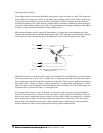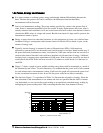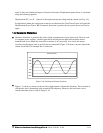
Table 1.2: Power and Energy Relationship Over Time
As in Table 1.2, the accumulated energy for the power load profile of Figure 1.7 is 14.92 kWh.
Q
Demand is also a time-based value. The demand is the average rate of energy use over time. The
actual label for demand is kilowatt-hours/hour but this is normally reduced to kilowatts. This makes
it easy to confuse demand with power. But demand is not an instantaneous value. To calculate
demand it is necessary to accumulate the energy readings (as illustrated in Figure 1.7) and adjust the
energy reading to an hourly value that constitutes the demand.
In the example, the accumulated energy is 14.92 kWh. But this measurement was made over a
15-minute interval. To convert the reading to a demand value, it must be normalized to a 60-minute
interval. If the pattern were repeated for an additional three 15-minute intervals the total energy
would be four times the measured value or 59.68 kWh. The same process is applied to calculate the
15-minute demand value. The demand value associated with the example load is 59.68 kWh/hr or
59.68 kWd. Note that the peak instantaneous value of power is 80 kW, significantly more than the
demand value.
Electro Industries/GaugeTech
Doc # E107706 V1.25 1-7
Time Interval
(Minute)
Power (kW) Energy (kWh)
Accumulated
Energy (kWh)
1 30 0.50 0.50
2 50 0.83 1.33
3 40 0.67 2.00
4 55 0.92 2.92
5 60 1.00 3.92
6 60 1.00 4.92
7 70 1.17 6.09
8 70 1.17 7.26
9 60 1.00 8.26
10 70 1.17 9.43
11 80 1.33 10.76
12 50 0.83 12.42
13 50 0.83 12.42
14 70 1.17 13.59
15 80 1.33 14.92


















